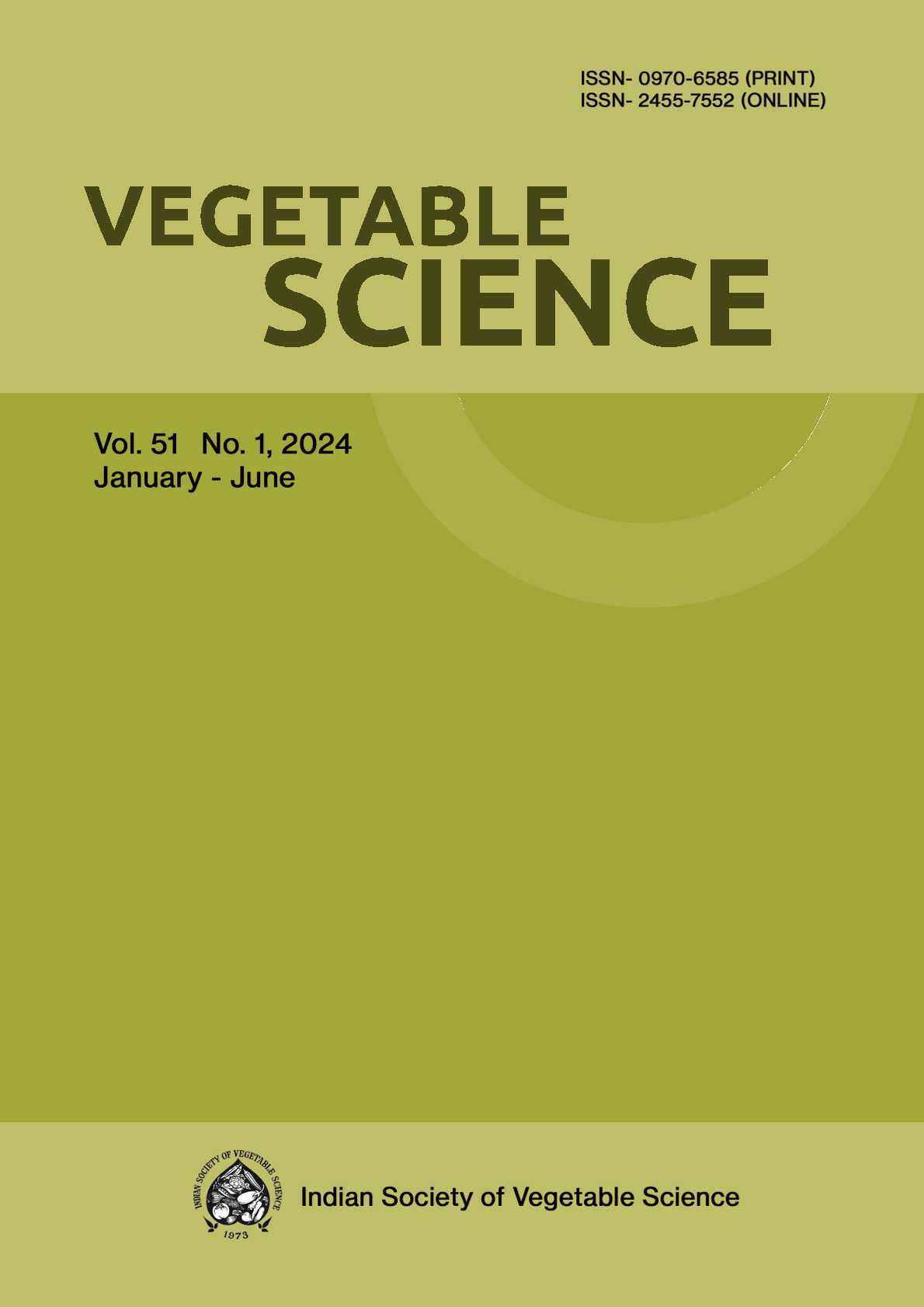Cucumber: Breeding and Genomics
DOI:
https://doi.org/10.61180/vegsci.2023.v50.spl.07Keywords:
Cucumber, Breeding methods, Sex expression, Stress tolerance, QTL, Candidate genesAbstract
Cucumber (Cucumis sativus L.) is one of the most important vegetable crops grown worldwide for immature fruits. Several improved varieties with a number of economically important traits were developed through conventional breeding. The availability of draft genome sequences has facilitated the wide application of genomics tools in cucumber improvement in last two decades. C. sativus var. hardwickii widely distributed in the northern foothills of the Himalayas is the progenitor of the present-day cultivated cucumbers. A large number of commercially cultivated varieties and hybrids were developed through conventional breeding approaches. In hybrid breeding, gynoecious sex expression has been used widely for the development of more productive hybrids economically. Genetic inheritance and molecular characterization were done for a large number of traits including agro-morphological, quality, biotic and abiotic stress tolerance. Besides, candidate genes were also identified for the number of traits and later on validated through transformation and knock-out. Sex expression has been studied widely in this crop and cucumber serves as the model crop to study sex expression. A number of genes for sex expression and other economically important traits were characterized and cloned. Development of cucumber inbreds with multiple disease resistance, better quality and tolerance to abiotic stress tolerance are the major focus in future cucumber improvement programme.
Downloads
Published
Issue
Section
License

This work is licensed under a Creative Commons Attribution-NonCommercial-NoDerivatives 4.0 International License.






